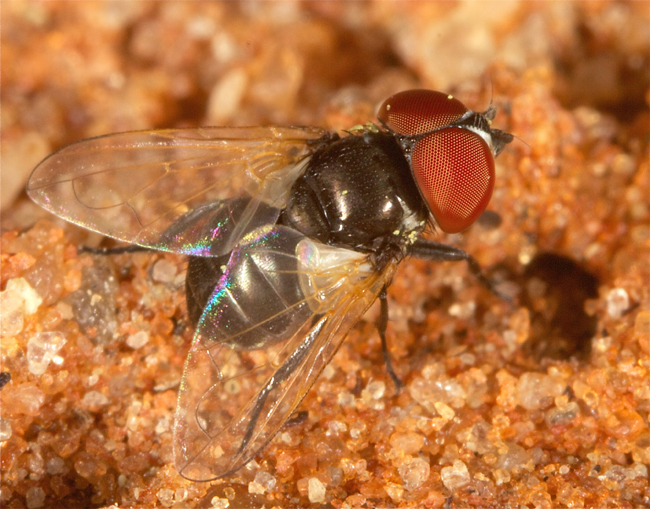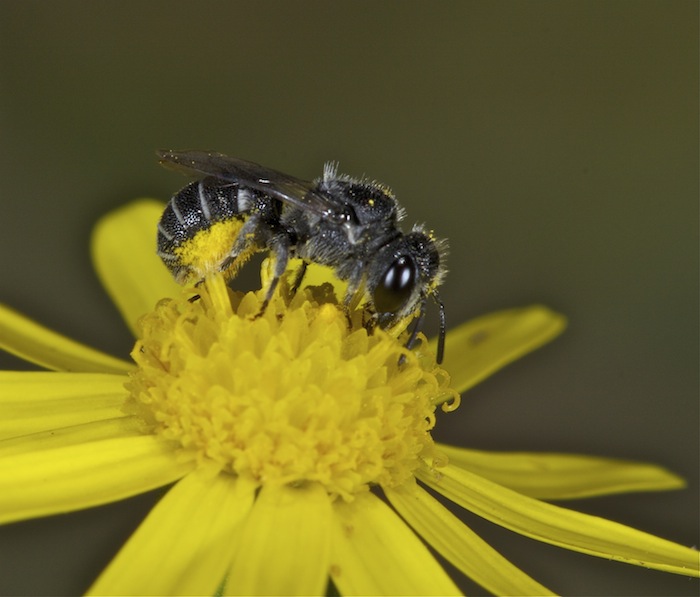There is no open access version of the paper you want
Here a bit of info
http://www.koreascience.or.kr/article/J ... 63891.page
vein M ending in R 4+5 well before wing margin and wing cell r4+5 with a petiole longer than crossvein r-m - makes a Phasia
nice paper on Phasiinae
https://stiremanlab.files.wordpress.com ... siinae.pdf
Insect or Invertebrates Identification - DONE
Moderator: Klipspringer
-
Klipspringer
- Global Moderator
- Posts: 5858
- Joined: Sat Sep 14, 2013 12:34 pm
- Country: Germany
- Contact:
Re: Insect or Invertebrates Identification
Yes, those are the two I'm trying to ID. I have more angles of the second one. 
Will look into them - may have to do a Phasia spp. entry.
Time for a .
.
Will look into them - may have to do a Phasia spp. entry.
Time for a
-
Klipspringer
- Global Moderator
- Posts: 5858
- Joined: Sat Sep 14, 2013 12:34 pm
- Country: Germany
- Contact:
Re: Insect or Invertebrates Identification
I think, ID to species level is not possible, just check the wing to see if that matches for Phasia
SANBI-list has for SA these Phasia spp:
africana
argentifrons
cana
distincta
nigromaculata
subnitida
transvaalensis
nasalis
nasuta

SANBI-list has for SA these Phasia spp:
africana
argentifrons
cana
distincta
nigromaculata
subnitida
transvaalensis
nasalis
nasuta
Re: Insect or Invertebrates Identification
Phasia - Wings transparent (especially in females) or "smoky" patterned (especially in males), with distinctive venation: M1 curves forward distally and meet R4+5, with petiole longer than r-m; calypters conspicuously large.
Here’s a Phasia pic from Diptera.info.:

Another Phasia from BugNet

Mine:


= Phasia sp. Whadda ya' think
Here’s a Phasia pic from Diptera.info.:

Another Phasia from BugNet

Mine:


= Phasia sp. Whadda ya' think
-
Klipspringer
- Global Moderator
- Posts: 5858
- Joined: Sat Sep 14, 2013 12:34 pm
- Country: Germany
- Contact:
-
Klipspringer
- Global Moderator
- Posts: 5858
- Joined: Sat Sep 14, 2013 12:34 pm
- Country: Germany
- Contact:
Re: Insect or Invertebrates Identification
This is a Heriades (or related genus). Would you agree and ammend the post, ExFmem?ExFmem wrote: ↑Wed Apr 15, 2015 8:02 pm Megachilid Bee
Family: Megachilidae
Imfolozi
The Megachilidae are a cosmopolitan family of (mostly) solitary bees distinguishable by the brush of pollen-carrying hairs (called a scopa) being restricted to the underside surface of the abdomen (rather than mostly or exclusively on the hind legs as in other bee families).
Megachilid genera are most commonly known as mason bees and leafcutter bees, reflecting the materials from which they build their nest cells (soil or leaves, respectively); a few collect plant or animal hairs and fibers, and are called carder bees. All species feed on nectar and pollen, but a few are cleptoparasites (informally called "cuckoo bees"), feeding on pollen collected by other megachilid bees. Parasitic species do not possess scopae. Megachilid bees are among the world's most efficient pollinators because of their energetic swimming-like motion in the reproductive structures of flowers, which moves pollen, as needed for pollination. One of the reasons they are efficient pollinators is their frequency of visits to plants, but this is because they are extremely inefficient at gathering pollen. Compared to all other bee families, megachilids require on average nearly 10 times as many trips to flowers to gather sufficient resources to provision a single brood cell.
If you have more photos of these Osmiines when they fly off and show the proboscis, one could exclude Stenoheriades for sure.
Re: Insect or Invertebrates Identification
Sure, will look and see what else I have.
Also, can I "assume" the second Tachnid fly we were talking about is also a Phasia sp, since I don't have a great pic of that one's wing venation? Can post the pics here if need be.
Also, can I "assume" the second Tachnid fly we were talking about is also a Phasia sp, since I don't have a great pic of that one's wing venation? Can post the pics here if need be.
-
Klipspringer
- Global Moderator
- Posts: 5858
- Joined: Sat Sep 14, 2013 12:34 pm
- Country: Germany
- Contact:
Re: Insect or Invertebrates Identification
Yes, I think this is also Phasia and likely also female, there are hardly any other Phasiinae in SA as I see it.
BTW: They are called Red-eyed Flies in the fuild guide
Love your entry
Re: Insect or Invertebrates Identification
Re: "This is a Heriades (or related genus). Would you agree and ammend the post, ExFmem?
If you have more photos of these Osmiines when they fly off and show the proboscis, one could exclude Stenoheriades for sure."
I do not have other photos of that bee. How do you wish me to amend the post - just make it show Family, Subfamily, Tribe, and make it a possibly Heriades, or definitively that genus? Thanks.
If you have more photos of these Osmiines when they fly off and show the proboscis, one could exclude Stenoheriades for sure."
I do not have other photos of that bee. How do you wish me to amend the post - just make it show Family, Subfamily, Tribe, and make it a possibly Heriades, or definitively that genus? Thanks.
-
Klipspringer
- Global Moderator
- Posts: 5858
- Joined: Sat Sep 14, 2013 12:34 pm
- Country: Germany
- Contact:



